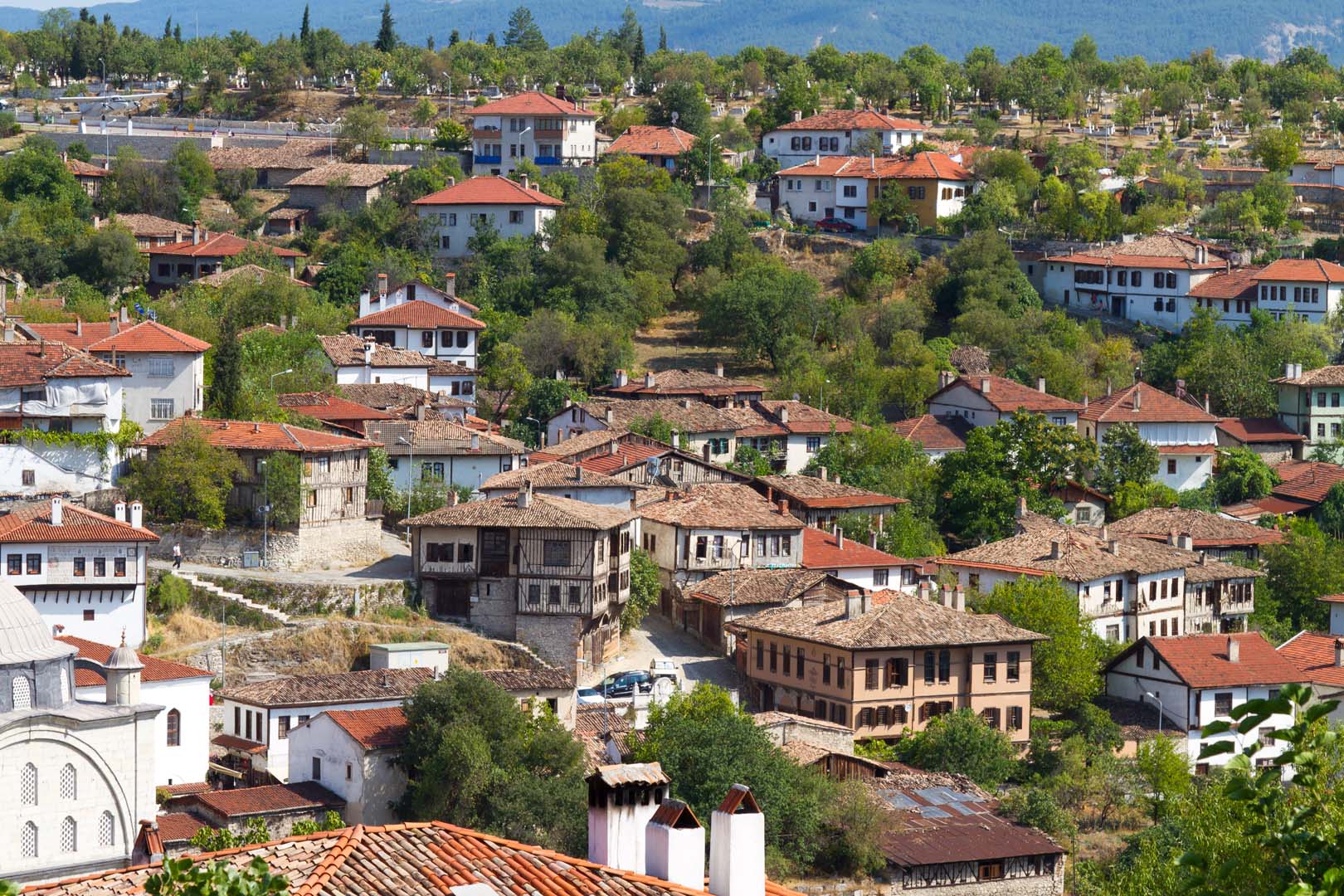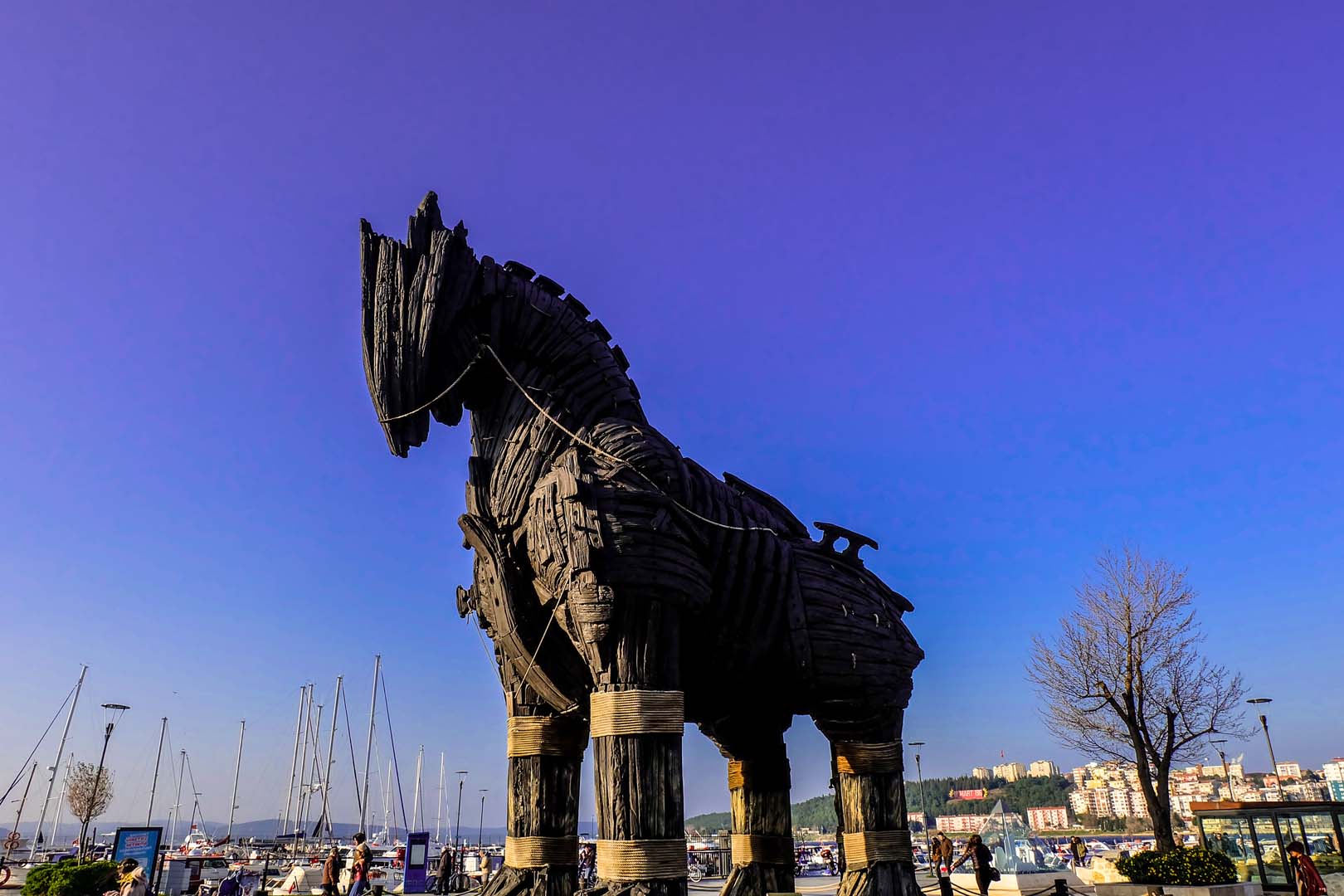Last Updated on 15/05/2023
The wide cultural and historical variety of Turkey astounds many. This region commonly referred to as the “cradle of civilizations,” is full of history. In other words, whenever you look you can spot historical magnificent monuments. Many kingdoms and empires have fought for control over Asia Minor over the millennia. All these civilizations left monumental witnessers of History some of which are among the most valuable heritage in the world. So let’s discover together the top must-see UNESCO heritage sites in Turkey.
UNESCO Heritage sites in Turkey
 We can find 17 UNESCO World Heritage Sites in Turkey, 13 of which are cultural sites and 2 of which are mixed. Moreover, the Turkey Museum Pass is perhaps worthwhile if you intend to visit several UNESCO sites in Turkey. The 15-day pass, which costs 210 Lira (about $50), covers 300 tourist attractions and museums connected to the Ministry of Culture and Tourism of the Republic of Turkey. You can use it to access UNESCO heritage sites in Turkey including Ephesus, Hierapolis, Hagia Sophia, the Chora Church, Troy, and many other monuments.
We can find 17 UNESCO World Heritage Sites in Turkey, 13 of which are cultural sites and 2 of which are mixed. Moreover, the Turkey Museum Pass is perhaps worthwhile if you intend to visit several UNESCO sites in Turkey. The 15-day pass, which costs 210 Lira (about $50), covers 300 tourist attractions and museums connected to the Ministry of Culture and Tourism of the Republic of Turkey. You can use it to access UNESCO heritage sites in Turkey including Ephesus, Hierapolis, Hagia Sophia, the Chora Church, Troy, and many other monuments.
The most valuable UNESCO Heritage sites in Turkey
Here is the list of the UNESCO Heritage sites in Turkey with the year of inscription.
- Aphrodisias (2017)
- Troy’s Archaeological Site İN Çanakkale (1998)
- The Ottoman Empire’s foundation city: Bursa and Cumalkzk (2014)
- Safranbolu City (1994)
- Ephesus ancient city (2015)
- The Hittite capital Hattusha (1986)
- Istanbul’s Historic sites (1985)
- Atalhöyük Neolithic Site (2012)
- The Multi-Layer Cultural Landscape of Pergamon (2014)
- Xanthos-Letoon in the Turkish Riviera (1988)
- National Park of Göreme and Cappadocia Rock Sites (1985)
- Hierapolis-Pamukkale (1988)
- Ani’s Archaeological Site (2016)
- The Social Complex of the Selimiye Mosque (2011)
- Cultural Landscape of the Diyarbakir Fortress (2015)
- Great Mosque and Hospital of Divrii by Nemrut Da (1987) (1985)
Ephesus Ancient City: Most visited UNESCO heritage site in Turkey

Ephesus ancient city in Izmir has Hellenistic and Roman communities. The location currently stands out as an illustration of a Roman port city where pure aestheticism has taken the place of utilitarian design. Ephesus sites that is one of the world’s seven wonders joined the list of UNESCO heritage sites in Turkey in 2015.
See more information here.
Troia Archeological site in Çanakkale
Troia is arguably one of the most famous archaeological and UNESCO Heritage sites in Turkey and in the world with a 4,000-year history. Homer immortalized the location and the historic Siege of Troia in the Iliad, and ever since then, numerous other works and movies have depicted it. After that, when Helen, the wife of Agamemnon of Mycenae, fled with Paris, a prince of Troia, the Siege of Troia began. The Achaean forces hid in this enormous wooden horse and appeared to have fled, ending the protracted conflict after many years. By bringing the horse inside their fortifications, the Trojans allowed the Achaeans access to their territory. Troia was set ablaze, and the populace was massacred.
Due to the site’s extensive remains, which are the most significant proof of the first contact between the civilizations of Anatolia and the Mediterranean region, it joined the list of UNESCO Heritage sites in Turkey. Since then, Tory has served as an inspiration to great artists all over the world.
Aspendos in Antalya

The ancient city of Aspendos, which is located near Antalya, is one of the Turkish Riviera’s top historic sites that figures in the list of UNESCO heritage sites list. Besides, this town dates back to 1,000 BCE. Its exceptional acoustic qualities provide guests with an unrivaled experience. It hosts numerous festivals and performances throughout the year and is one of the best-preserved antique theaters ever.
Safranbolu city

Safranbolu city constitutes an example of a typical Ottoman city with well-preserved historical architecture. As the primary commercial link between the Orient and Europe, the city was crucial to the caravan trade, and as a result, distinctive settlements like Safranbolu grew along its path. There are 2000 traditional Safranbolu homes in the city, which are the best representations of traditional Turkish housing architecture. The city still has characteristics of Ottoman buildings layouts. The inner city market district of Ukur, Kranköy, and the Vineyards of Balar are the three separate historic districts of Safranbolu that appear in the listing of UNESCO heritage sites in Turkey.
Historical areas of Istanbul

Istanbul, formerly known as Constantinople, has a rich history. Morever, it served as the capital of the Eastern Roman Empire and then the Ottoman Empire. Consequently, monuments from the Byzantine and Ottoman civilizations still stand in Istanbul’s Historic Areas. Besides, they showcase the architectural triumphs of several imperial eras. The Blue Mosque, the harem at Topkapi Palace, Hagia Sophia, and Chora Church are some of our favorites.
Cappadocia

The volcanic terrain of the Goreme Valley which was carved entirely by erosion constitutes one of the most captivating UNESCO sites worth-see in Turkey and even in the world. Furthermore, the valleys are dotted with fairy chimneys, traces of cave homes and underground towns, and Byzantine art that dates to the fourth century and suggests a human presence there.
W highly recommend you spend a couple of days in Cappadocia to enjoy the magnificent troglodyte landscape from hot air balloons.
Importance of UNESCO Heritage sites in Turkey and worldwide
UNESCO designates locations as World Heritage Sites to help preserve them for future generations. Besides, heritage serves as our living legacy from the past, and both cultural and natural heritage are “irreplaceable sources of life and inspiration,” according to the organization’s stated goals. Therefore, the World Heritage mandate of UNESCO is divided into eight sub-targets. These include giving emergency aid for sites in danger, providing technical help and professional training, supporting States Parties’ public awareness-building initiatives, and urging nations and the local community to commit to world heritage conservation in various ways.
Consequently, the site, its surroundings, and the connections between them can all benefit from being a UNESCO Heritage Site. Moreover, they gain worldwide recognition and legal protection, and under certain circumstances, they may be eligible for funding from the World Heritage Fund and other sources to help in their conservation.
To conclude, Turkey is much more than just its south coast beaches and Istanbul’s nightlife; it is a country with a rich history and cultural landmarks to see.
We should note that in addition to the numerous monuments in Turkey that have already been designated as UNESCO World Heritage Sites, there are 84 more on the preliminary list undergoing review.
For further information don’t hesitate to contact us. Or take a look at our services.




